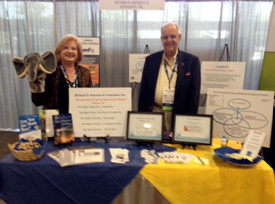Did you hear the story about the Safety Elephant who roamed all over the place stomping people down, messing things up, and completely blocking the ability of the people from having the important safety conversations?
 Yes, the elephant that got in the way of having the conversations that matter? You did? Oh, you have one of those too?
Yes, the elephant that got in the way of having the conversations that matter? You did? Oh, you have one of those too?
Safety First Elephants are big and smelly. Everyone knows they are there because they stink up the place, making it smell rotten. Elephants are also sneaky, often disguised, or even invisible. Sometimes they show up as the bully who tries to push everyone around and control the group. Sometimes it is a boss who just doesn’t seem to care. Sometimes it is “obliviousness” to what is really happening. Sometimes it is simply an undiscussable that has been allowed to fester. Anyone who tries to speak up about an important issue is silenced, put down, demeaned or ridiculed. The elephant just loves this. The elephants are in control! They are having a happy time!
You know that the elephant has a name…yet, you speak of it in whispers. (For the purpose of this Safety Flash, let’s call this elephant, Hiney – the H is for Hidden!) While Hiney is invisible or disguised, Hiney loves for you to talk about him/her in private, with a person you can trust. You might talk about Hiney in the restroom or by the water cooler. You make Hiney really quite visible in these conversations. But when you stay quiet in the situations that really matter – when you could constructively make an issue explicit, but you don’t – then Hiney remains very safe. So back in the workplace, Hiney keeps sneaking around, messing the place all up and stomping all over. Hiney is really very unfriendly – just loving it when someone gets hurt because you couldn’t talk about the real safety problem. Sometimes there are whole herds of Hiney’s!
Hiney is really very afraid of being made visible. If you just look Hiney (aka, the undiscussable) right in the eye and name the big, stinking elephant, everything changes! The big, cowardly, stinky, brutal Hiney seems to just melt away. You can talk about Hiney and work to fix the safety problem. There are courageous, safe ways to name and address the hidden elephants! Hiney can’t stand the light of the truth! Transparency hinders elephant herds. Fewer injuries and incidents will happen when you learn how to lift them up and address them. Call us…We’ll show you how!
 There is no doubt that work in the oil and gas industry is tough and dangerous, but that is no excuse for disregarding the health and safety of the workers. Almost all the deaths occurred when safety procedures were not followed. There is plenty of safety information available relating to tank cleaning. Have we not learned the lessons of improper confined space/vessel entry?
There is no doubt that work in the oil and gas industry is tough and dangerous, but that is no excuse for disregarding the health and safety of the workers. Almost all the deaths occurred when safety procedures were not followed. There is plenty of safety information available relating to tank cleaning. Have we not learned the lessons of improper confined space/vessel entry? Partner-Centered Safety is a robust, proven way to bring people together to achieve sustainable levels of safety excellence being based on deeply held beliefs and values.
Partner-Centered Safety is a robust, proven way to bring people together to achieve sustainable levels of safety excellence being based on deeply held beliefs and values. Most of us working in safety have been brought up to see organizations as if they are machine-like. This thinking goes all the way back to Descartes (1596-1650) and Newton (1642-1727). We use reductionist approaches to try to understand them. We seek cause/effect relationships. We use linear processes for training and the like, prescribing answers and doing things TO the people. We work on this part or that part trying to fix the whole thing.
Most of us working in safety have been brought up to see organizations as if they are machine-like. This thinking goes all the way back to Descartes (1596-1650) and Newton (1642-1727). We use reductionist approaches to try to understand them. We seek cause/effect relationships. We use linear processes for training and the like, prescribing answers and doing things TO the people. We work on this part or that part trying to fix the whole thing.  The first part of this work is sharing all information and talking together about it. Another part is building trust and interdependence with the people as we openly discuss what is happening, what we are doing and why. The third part of this work is helping people to see the big picture and how important their part is to the success of the whole business.
The first part of this work is sharing all information and talking together about it. Another part is building trust and interdependence with the people as we openly discuss what is happening, what we are doing and why. The third part of this work is helping people to see the big picture and how important their part is to the success of the whole business. Lots of critical knowledge, experience and skills will be lost. Younger people, who have grown up in an electronic world of texting and games, will replace these people. Many are out of shape and bordering on being over weight; some are developing diabetes. This will pose significant challenges to employers and the need to work safely and well.
Lots of critical knowledge, experience and skills will be lost. Younger people, who have grown up in an electronic world of texting and games, will replace these people. Many are out of shape and bordering on being over weight; some are developing diabetes. This will pose significant challenges to employers and the need to work safely and well. Most of the safety people I’ve come to know approach organizations as if they are mechanical things to manipulate. Organizations are structured in functions. Knowledge is structured in pieces. People are narrowly skilled. Motivation is based on external factors. Information is shared on a need to know basis. Change is a troubling problem. People work in prescribed roles seeing only their part of the work. If change is needed people are moved around like chairs. Training is provided in abundance. Safety programs are set up as step-by-step processes where things are arranged in a prescribed sequence.
Most of the safety people I’ve come to know approach organizations as if they are mechanical things to manipulate. Organizations are structured in functions. Knowledge is structured in pieces. People are narrowly skilled. Motivation is based on external factors. Information is shared on a need to know basis. Change is a troubling problem. People work in prescribed roles seeing only their part of the work. If change is needed people are moved around like chairs. Training is provided in abundance. Safety programs are set up as step-by-step processes where things are arranged in a prescribed sequence. 




